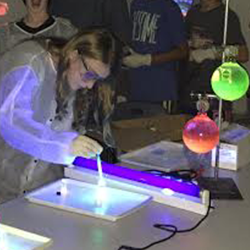Bringing A City Together Through STEM
Middle East Leadership Initiative Fellow Elie Wurtman is looking to disrupt the way students in Jerusalem learn. He established his afterschool program, PICO Kids, to do just that. He shares what he has learned below.
AGLN: What is your Action Pledge?
Elie Wurtman: My Action Pledge was to create a STEM (science, technology, engineering, and math) education program for 1,000 children in Jerusalem, fundamentally changing the way children learn about science, technology, and innovation.
Why is STEM education important?
EW: Jerusalem is a very complex city. We have all sorts of difficulties here. STEM education is a neutral topic that most people can rally around. And Jerusalem is sorely needing innovation in the area of education. I decided to focus on STEM as a means to fundamentally change the trajectory of children growing up in Jerusalem, giving them the tools and hopefully a fun and enjoyable way to learn about science and technology that inspires them to do great things as they get older.
In my opinion, a good STEM education provides the tools that are needed for the modern economy. STEM allows children to learn in the garage or in a playroom where they can get their hands dirty, they can roll up their sleeves, they can press buttons, they can program things, they can touch scientific experiments, and connect to learning. Very much the same way we do at Aspen, talking to each other, experiencing things and not just listening to a lecture. I find that STEM education is something, which draws children into education, which makes education fun. It opens their eyes to the future, it opens their eyes to things they’re fundamentally interested in, in a world that’s very much driven by technology.
AGLN: What are the biggest challenges you see in exposing youth to STEM?
EW: The biggest challenge is leadership - leadership amongst educators who are perhaps scared to move outside traditional curriculum for learning. It’s difficult to find great teachers and inspire them to teach in a new way that makes learning fun. The traditional curriculum is very much based on frontal learning, on textbook learning. I don’t think we’ve moved past textbooks, but the world is at a dramatic learning point where all the information you could possibly ever learn is in your pocket, in your cellphone. And my view is that a hands on educational experience is something children want and children seek. Knowledge is a fact; we have access to knowledge. Teaching children how to create things through their hands, how to learn through experience is something we need to bring back to the classroom.
AGLN: Tell us about the model. How does it work?
EW: The vision is a big vision. It’s very neutral, it’s all about positive things and creating a better future. I think it’s easy for people to get excited to be a part of that. Translating that into action obviously takes time, it’s perseverance, it’s working on getting bigger and better year after year, people seeing the results, seeing smiling faces from lots of happy children, and wanting to be a part of it. So vision is a piece of it, but also getting out there and actually putting words to action is what makes the real difference. And everyone wants to be a part of success so it’s been really fun to see us reach that tipping point of moving from an idea to action to success.
What kind of support can the AGLN provide you?
EW: I would love to see support, networking and cooperation amongst fellows focused on similar projects across the globes. We could learn a lot from shared success models and this could drive massive growth if they are copied across the network. It would also be great to see international cooperation amongst program participants. Think big, high profile experiences. Imagine children in Africa, the US and the Middle East doing a global competition and STEM celebration!
Other Recent Posts
The final day of the 2019 Resnick Aspen Action Forum closed with a celebration of intergenerational perspectives that included presentations from young leaders and a discussion between AGLN Moderator and South African Fellow Heather Sonn and Keith Berwick, long-time friend and founding executive director of the Henry Crown Fellowship. ...
When Anousheh Ansari was seven years old, she drew a photo of a rocket flying through space and set her eyes on exploring outer space being astronaut. There was no space program in Iran at the time and the chances of Ansari becoming an astronaut were slim. “I like to prove people wrong,” said Anousheh Ansari on stage at the 2019 Resnick Aspen Action Forum. On ...
The 2019 John P. McNulty Prize laureates, five extraordinary individuals, shared their courageous and bold social impact ventures at the Resnick Aspen Action Forum on Wednesday night. McNulty Foundation President Anne Welsh McNulty, who founded the award in honor of her late husband, described the McNulty Prize as a call to action. “You have shown ...
Borders are a part of life –– whether internal, invisible, geo-political or otherwise. Borders can help and they can harm. Borders are powerful and they can also be a form of power. Understanding the borders that are around and within us can lead to greater self-awareness and open the path for making great change in the world. With inspiration from the ...
1. Draw inspiration from other participants Over 1,000 Action Pledges have been made since the inaugural Action Forum in 2013. Watch the video below on some highlighted Action Pledges. 2. Find your sweet spot The most exciting Action Pledges come from what we call your sweet spot, the intersection of your passions, talents, and your community’s ...



Leave a Comment